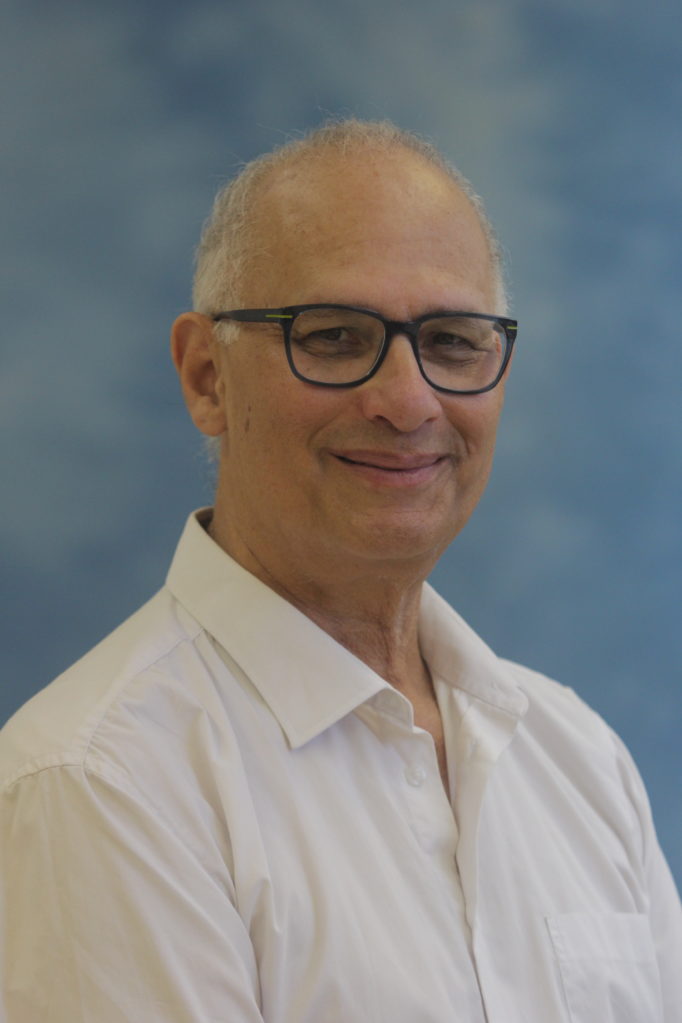Yachin Cohen
Personal Info
Ph.D. 1987, University of Massachusetts, Amherst Polymer Science and Engineering. Industrial work, 1980-1982, Bromine Compounds Ltd., Marketing Division-Flame Retardants. Visiting Scientist, 1998-2000, Massachusetts Institute of Technology. Co-founder, PolyEitan Composites Ltd. Fellow, American Physical Society.Research Fields
Surface-Phenomena, Advanced Materials and DevicesResearch Topics
Dispersion and processing of carbon nanotubes with polymers; Functional nano-composites
Carbon nanotubes (CNT), are exciting materials with unique properties. Their utilization of this unique material relies on the ability to disperse and process them for useful function. We study the interaction of amphiphilic homo- and co-polymers with CNTs by contrast variation neutron scattering, elucidating the conformations of polymers, selectively interacting with CNTs. In collaboration with professor Eyal Zussman of the Department of Mechanical Engineering, we develop composite polymer nanofibers with embedded CNTs by the electrospinning techniques. With professor Yaron Paz of our department we study combination of CNTs and titania nanoparticles in composite nanofibers. Applications of such nanofibers are being pursued in advanced materials for high-strength ballistic protection, photocatalytic eliminatinof hazardous chemicals, optical coating, electrodes for fuel cell, and more.
High performance composite Materials by Fiber Compaction
A novel processing scheme for composite materials directly from fibers without extraneous matrix material was developed. The physical basis for this patented process, termed “Reversed Pressure Compaction” is the effect of pressure on the equilibrium and kinetic properties of oriented chain crystals, which is currently under study using high-pressure x-ray scattering measurements. Further studies on adhesion of metal to the polymer composite has led to development of new materials for high frequency microwave and electronics circuitry.
Aqueous solutions, gels and colloids
The delicate and intricate balance of forces controlling conformation, microstructure and supramolecular assembly allows unique functions of polymer and colloid systems. Together with colleagues in the Faculty of Food Engineering and Biotechnology, we separated the osmotic and elastic contributions of the swelling behavior of charged and neutral gels, and elucidated the effects of solutes such as salts and sugars. We have studied the origin of spatial inhomogeneities in acrylamide gels used in chromatographic separations. The conformation of H-bonded interpolymer complexes was shown to depend on solvent pH or dielectric constant, and new intermediate microstructures in the partially complexed state were discovered. A novel methodology using small-angle scattering to probe the inner structure of multicomponent polymer lattices were developed. Microstructure evolution in ceramic sol-gel materials during the gelation process was examined, and the critical structural features of the nucleation stage during zeolite synthesis were elucidated.
Block Copolymers
The deformation mechanism of ordered block copolymers, in particular layered structure, is investigated by in-situ measurements of small-angle x-ray scattering during deformation. Phase transitions and structure formation during solution-processing of block copolymers is also studied.
Publications
O. Gazit, R. Khalfin, Y. Cohen and R. Tannenbaum, “Self-assembled diblock copolymer “nanoreactors” as catalysts for metal nanoparticle synthesis” J. Physical Chemistry C 113, 576-583 (2009).
J. Lipp, M. Shuster, G. Feldman, Y. Cohen, “Oriented Crystallization in Polypropylene Fibers Induced by a Sorbitol-based Nucleator” Macromolecules 41, 136-140 (2008).
S. Prilutsky, E. Zussman and Y. Cohen, “The effect of embedded carbon nanotubes on the carbonization of poly(acrylonitrile) nanofibers” Nanotechnology 19, 165603-11 (2008).
L. Shavit-Hadar, D. M. Rein, Rafail Khalfin, A.E. Terry, G.W.J.C. Heunen, Y. Cohen, “Compacted UHMWPE fiber composites- morphology and X-ray microdiffraction experiments”, J. Polym. Sci. Part B: Polym. Phys. 45, 1535-1541 (2007).
H. Sertchook, H. Elimelech, C. Makarov, R.L. Khalfin, Y. Cohen, M. Shuster, F. Babonneau, D. Avnir, “Composite particles of polyethylene@silica”, J. Amer. Chem. Soc. 129, 98-108 (2007)
D. M. Rein, L. Shavit, R. L. Khalfin, Y. Cohen,, K. Shuster and E. Zussman, “Electrospinning of Ultra-High Molecular Weight Polyethylene (UHMWPE) Nanofibers”, J. Polym. Sci. Part B: Polym. Phys. 45, 766-773 (2007).
J. Lipp, M. Shuster, A. E. Terry and Y. Cohen, “Fibril Formation of 1,3:2,4-Di(3,4-dimethylbenzylidene)sorbitol in Polypropylene Melt”, Langmuir 22, 6398-6402 (2006).
Y. Dror, W. Pyckhout-Hintzen and Y. Cohen, “The Conformation of Polymers Dispersing Single-Walled Carbon Nanotubes in Water: A Small Angle Neutron Scattering Study”, Macromolecules 38, 7828-7836 (2005).
S. Kedem, J. Schmidt, Y. Paz and Y. Cohen, “Composite Polymer Nanofibers with Carbon Nanotubes and Titanium Dioxide Particles”, Langmuir 21, 5600-5604 (2005).
D. M. Rein, L. Shavit, R. L. Khalfin, Y. Cohen, A. Terry, and S. Rastogi, “Phase Transitions in Ultra-Oriented Polyethylene Fibers under Moderate Pressures – A Synchrotron X-ray Study”, J. Polym. Sci. Part B: Polym. Phys. 42, 53-59 (2004).
Y. Cohen and E.L. Thomas, “The Effect of Defects on the Response of a layered Block- Copolymer to Perpendicular Deformation: One Dimensional Necking” Macromolecules 36, 5265-5270 (2003).
Y. Dror, W. Salalha, R.L. Khalfin, Y. Cohen, E. Zussman, A. Yarin, “Embedded Carbon Nanotubes in Oriented Polymer Nanofibers by Electrospinning”, Langmuir 19, 7012-7020, (2003).
Yachin Cohen
